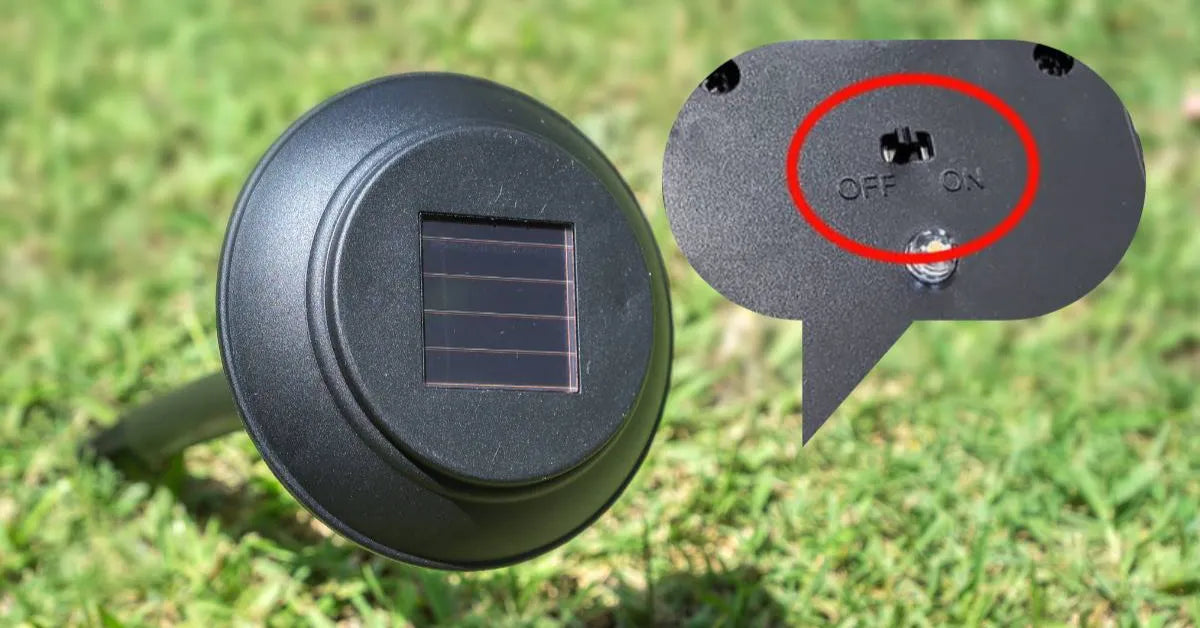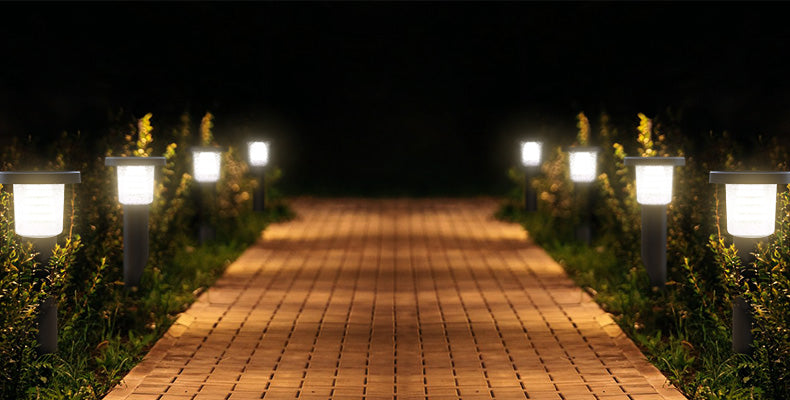I get this question a lot from homeowners worried about cloudy weather or trying to use solar lights indoors. The short answer might surprise you.
Yes, a light bulb can technically charge a solar panel. But here's the catch: it's extremely inefficient and completely impractical for generating useful amounts of power. In fact, you'll spend more on electricity powering the bulb than you'll ever get back in stored solar energy.
Let me explain why this matters and what actually works instead.
The Science Behind Artificial Light Charging

How Solar Panels Actually Work
Solar panels convert photons (light particles) into electricity through the photovoltaic effect. This fundamental process works with any light source that emits the correct wavelengths—yes, including your household light bulbs.
When photons hit the solar cells, they excite electrons and create an electrical current. It doesn't matter whether those photons come from the sun or a lamp. The physics are the same.
A bright, high-wattage light bulb works better than a dim one because more photons hit the panel surface. For example, a 100-watt incandescent bulb generates more charging potential than a 40-watt bulb.
Placing the light source very close to the panel improves the charging rate. Distance matters significantly here. The closer your artificial light sits to the solar panel, the more photons actually reach the photovoltaic cells.
Both incandescent and LED bulbs emit light wavelengths that solar panels can absorb. The problem isn't whether it works—it's how poorly it performs compared to natural sunlight.
Related: How Do Solar Lights Work? The Ultimate Simple Step-by-Step Guide
The Massive Gap: Sunlight vs. Indoor Lighting

Here's where the numbers get brutal.
Natural sunlight delivers approximately 100,000 lux at noon on a clear day. That translates to roughly 1,000 watts of power per square meter hitting your solar panels. The sun provides a complete spectrum of electromagnetic radiation—visible light, ultraviolet, and infrared—all perfectly matched to what solar panels need.
Indoor lighting? A typical bright room gives you 300 to 1,000 lux at best. That's barely 1-10 watts per square meter. You're getting less than 1% of the sun's charging power from even your brightest household lights.
Even on a cloudy day, natural sunlight provides roughly 10 times more charging power than indoor lighting. Solar panels are specifically designed to absorb wavelengths between 400nm and 1200nm—and the sun delivers this spectrum with overwhelming intensity that no artificial light can match.
The spectrum from artificial lights is narrower and weaker. It's like trying to fill a swimming pool with an eyedropper.
Why Light Bulb Charging Fails: The Three Fatal Flaws

Low Power Output
The power generated by artificial light is minimal compared to direct sunlight. Studies show artificial light produces only about 10-25% of the energy capture you'd get from direct sun exposure. For practical solar lighting systems, this output is essentially worthless.
Energy Waste
Here's where it gets really inefficient. Incandescent bulbs convert only about 10% of their energy into visible light—the rest becomes heat. Then solar panels themselves only convert about 15-20% of the light hitting them into electricity.
You're stacking inefficiencies on top of inefficiencies. It's a double energy loss that makes the entire process economically absurd.
Cost-Prohibitive
This is the deal-breaker: it takes more energy to power the light bulb than the solar panel can produce. You're literally spending more on electricity than you're generating. There's no scenario where this math works in your favor.
You'd be better off just plugging your device into the wall outlet directly and skipping the light bulb middleman entirely.
When (If Ever) Should You Try This?
I'll be honest with you—there are only two legitimate uses for charging solar panels with light bulbs.
First, it works for small, low-power devices like solar-powered calculators. These tiny gadgets are specifically designed for low-light environments and need minimal power. The math can work here because they require so little energy.
Second, it's useful for demonstrating how solar panels work in classrooms or science projects. It proves the principle even if it's not practical.
For anything else? Forget it. If your solar product has a USB port or wall charger option, use that instead. Check out alternative ways to charge solar lights that actually make sense for cloudy weather.
The Real Solution: Smart Design Over Inefficient Workarounds

Here's what people are actually worried about when they ask about light bulb charging: "What happens when it's cloudy?" or "Can I use solar lights in my garage?"
You don't need light bulbs. You need better solar lighting design.
Our intelamp Solar Flood Lights solve these problems the right way—through engineering, not inefficient workarounds.
Built for Reliability: 20000mAh Battery Capacity
The massive battery capacity means these lights continue illuminating for days even without direct sunlight. You're not constantly worrying about charge levels or scrambling for backup power. The system handles cloudy weather naturally because it stores enough energy during sunny periods.
The Game-Changer: 16.4 FT Cable for Split Installation
This is the feature that makes indoor installation actually viable. The 16.4-foot cable lets you mount the highly efficient solar panel outside in full sunlight while installing the light fixture indoors or in shaded areas.
You're not trying to make weak indoor light work. You're getting real sunlight to charge while positioning the light exactly where you need it. This completely eliminates the indoor charging problem without any energy waste.
Smart Linkable Technology
The lights communicate with each other within 100 feet, creating coordinated security lighting. Motion detected by one light triggers others—what we call "human-unattended lighting" where lights illuminate your path before you arrive.
This isn't just about charging efficiency. It's about creating a security lighting system that works intelligently.
Check out our full range of professional solar outdoor lights designed for real-world conditions.
See the full specs: Linkable Solar Flood Light
Maximizing Solar Performance: What Actually Works

Want your solar lights running at peak efficiency? Focus on these proven strategies instead of light bulb experiments.
Deep Charging: Turn off your solar lights for 48-72 hours occasionally. This lets the battery fully charge without immediate discharge, extending overall lifespan and improving performance.
Regular Cleaning: Dust, pollen, and grime block photons from reaching your solar cells. Clean panels with warm soapy water and a microfiber cloth monthly. Dirty panels can lose 10-30% of their output—that's significant.
Optimal Positioning: Install panels at the correct angle for your latitude to maximize midday sun exposure. If you're unsure whether your location has adequate sunlight, check if direct sunlight is required for your specific setup.
Reflective Surfaces: Strategically placed mirrors or aluminum foil can direct additional ambient light onto panels. This trick works surprisingly well in partially shaded locations.
FAQs
Can an LED light charge a solar panel?
Yes, LED bulbs can charge solar panels because they produce bright, consistent light with less heat than incandescent bulbs. However, LED charging remains highly inefficient compared to direct sunlight, requiring 6-12 hours of exposure for minimal charge. You're still better off using a wall charger or improving your solar panel's sun exposure.
Can solar panels get power from lights?
Technically yes—solar panels absorb photons from any light source and generate electrical current. But the output is so minimal that it's impractical. The energy generated is significantly less than the energy required to power the artificial light source itself, creating a net energy loss.
Will normal light bulbs charge solar lights?
Yes, normal incandescent or fluorescent bulbs can charge solar lights, but they're extremely inefficient for this purpose. These bulbs waste substantial energy as heat and require 6-12 hours to achieve even partial charges. The electricity cost exceeds any benefit you'd receive.
Will an indoor light charge a solar light?
Yes, indoor lights can charge solar lights, but efficiency is extremely low. Indoor light intensity is hundreds of times weaker than natural sunlight. This might work for tiny devices like solar calculators, but it's completely useless for generating meaningful energy storage in typical solar lighting systems.
The Bottom Line: Skip the Light Bulb Experiment
I've tested countless solar setups, and the light bulb charging method fails every practical test. The physics work in theory, but the economics and efficiency make it pointless.
If you're dealing with cloudy weather, invest in high-capacity solar security lights with proper battery storage. If you need indoor lighting with solar benefits, use split installation with adequate cable length.
Stop trying to outsmart physics with light bulbs. Start using solar technology that's actually designed for real-world conditions.
The sun remains your best charging source by an overwhelming margin. Design your installation to maximize solar exposure, and choose products built to handle weather variability naturally.
That's how you get reliable solar lighting—not by pointing desk lamps at photovoltaic cells.
Further Reading
Stop Guessing: How Long Do Solar Lights ACTUALLY Take to Charge?
How to Charge Solar Lights Without Sun: 7 Methods + Ultimate Solution
Do Solar Lights Need Direct Sunlight? The Complete 2025 Answer


